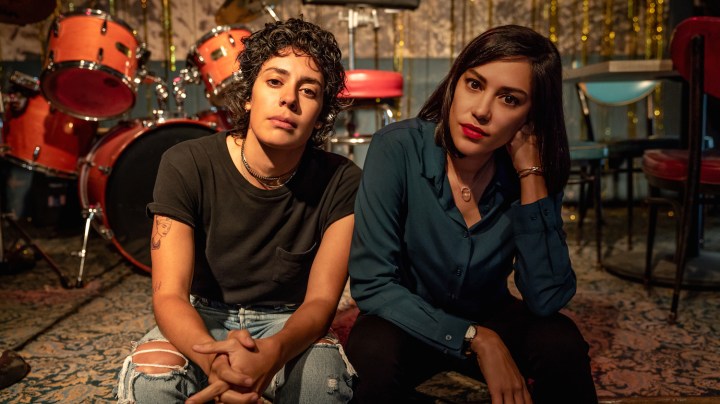LGBTQ Roles on TV Hit Record High, But Queer Latinx Characters Remain Underrepresented

Courtesy of Starz
There are many statistics to take note of in GLAAD’s annual “Where We Are on TV” report. The most noteworthy may be the fact that of the 879 regular characters scheduled to appear on broadcast scripted prime-time television this 2019-2020 season, 90 (10.2%) are LGBTQ. That is, as the report notes, a record high for shows airing on CBS, FOX, NBC, ABC and The CW. It suggests that LGBTQ stories and characters are more part of the mainstream than ever before. In addition to those 90 regular characters, cable provided 121 while streaming originals added 109. Those numbers show that U.S. television is moving in the right direction, and precisely the kind of take-away this report has long championed.
Designed to quantifiably track the presence of LGBTQ regular and recurring characters on television by calculating their numbers in original scripted prime-time programs across both broadcast and cable networks, and now original series on several streaming services, the “Where We Are on TV” report now also assesses trends and statistics when it comes to broader issues of diversity. Thus, while the report offers helpful breakdowns when it comes to the impact shows like Pose, One Day at a Time and Vida have had on those LGBTQ counts, their numbers also speak to the way Latinx representation still lags behind.
The report notes, for example, that across broadcast, cable and streaming services, Latinx characters barely make up 15% of LGBTQ characters on the small screen. On broadcast networks there are only 15 Latinx LGBTQ characters. On cable, there are 24 Latinx LGBTQ characters. And on streaming services there are 23 Latinx LGBTQ characters.
Acknowledging the way Spanish-language fare needs to be addressed in order to give an even more complete image of contemporary television in the U.S., GLAAD’s report helpfully has a section on “Representation in Spanish-Language Programming.” Noting that “LGBTQ-inclusive storytelling in Spanish-language television can have tremendous social impact; not only for the queer members of a family, but for the other family members who may be tuning in to watch their favorite series,” GLAAD points to high-profile projects that graced the small screen this past year and which show some progress being made.

Most importantly, perhaps, this TV season saw the US premiere of Juntos el corazón nunca se equivoca, a telenovela which features a gay couple (‘Aristemo’) as its protagonists, a sign that Spanish-language programming is making helpful inroads when it comes to LGBTQ representation. The report is worth reading in full, offering both hopeful stats as well as frustrating ones that show there is still plenty of work to be done.